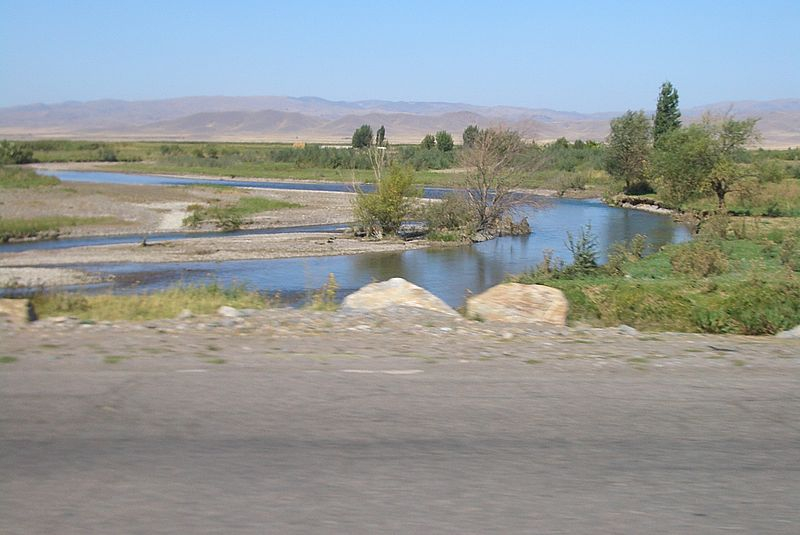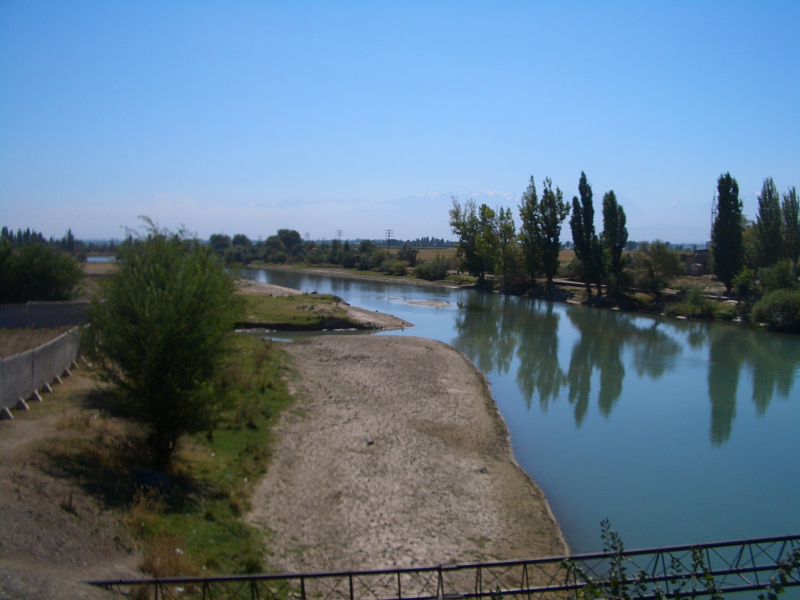Chu

In Northern Kyrgyzstan and Southern Kazakhstan, the Chu is a river. The first 115 kilometers (663 miles) of the river are in Kyrgyzstan, then the river is the border between Kyrgyzstan and Kazakhstan for 221 kilometers, and the last 731 kilometers are in Kazakhstan. Its rank is among one of the longest rivers in Kazakhstan. It is one of Kyrgyzstan's and Kazakhstan's longest rivers. It has a 62,500-square-kilometer drainage basin (24,100 sq mi).
The river is called after the Chüy Region, Kyrgyzstan's northernmost and most populated administrative region, as well as Chüy Avenue, Bishkek's major street, and Shu, Kazakhstan's Jambyl Region.
The Iranian Sughds, who spoke Soghdian, an East Iranian language, used to live in this vicinity of the river. The area was strategically vital during the Middle Ages. Suayub, the capital of the Western Turkic Khaganate, and Balasagun, the capital of the Qara Khitai, were both located there (Western Liao dynasty).
The Chu River posed a threat of flooding to the Chu Valley's communities. An ice gorge created on the Chu River upstream from Tokmok, the administrative center of Semirechye Province, in the winter of 1878. After heavy flooding wreaked havoc on the town, the province's capital was relocated to Pishpek (Bishkek).
Length: 1,067 km (663 mi)











